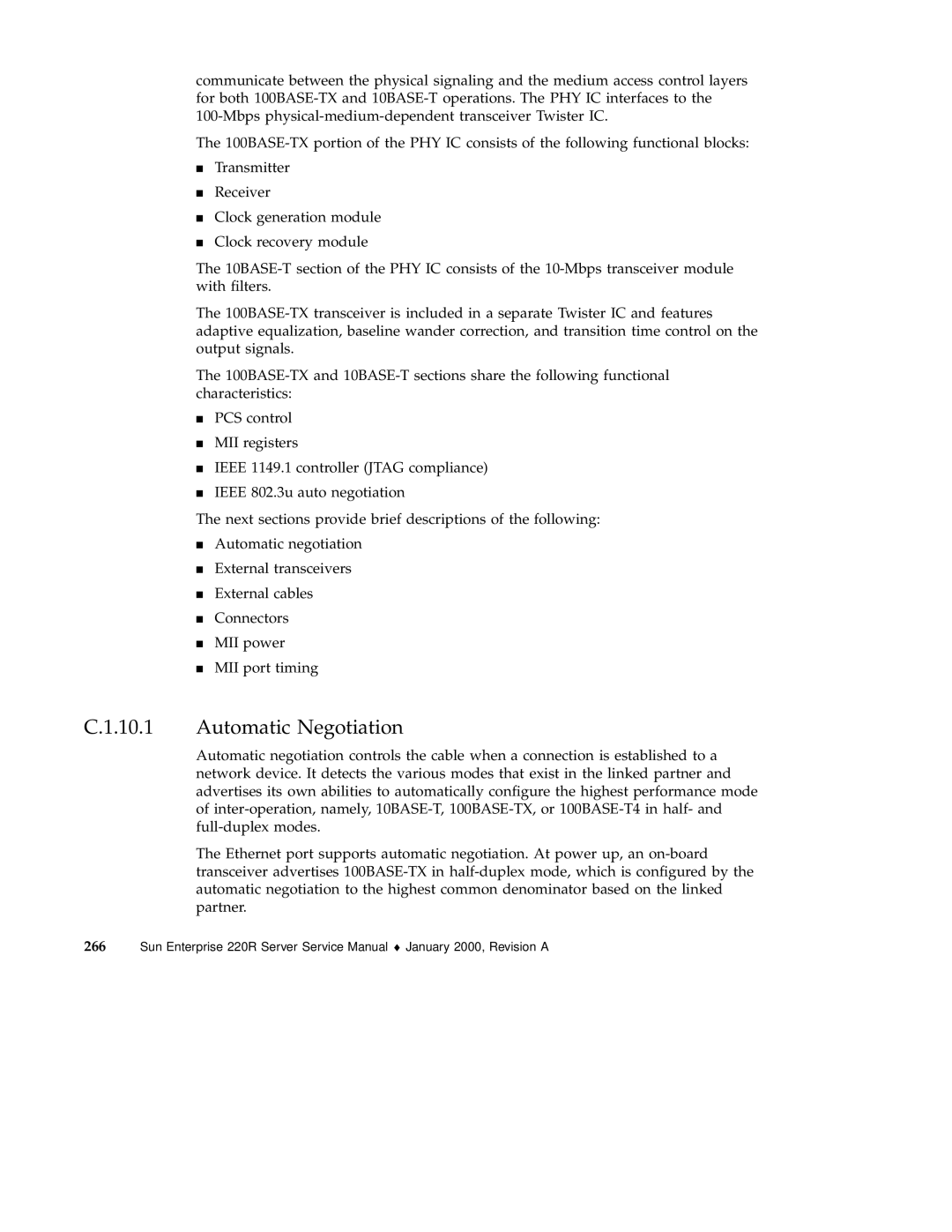communicate between the physical signaling and the medium access control layers for both
The
Transmitter
Receiver
4Clock generation module Clock recovery module
The
The
The
PCS control
MII registers
IEEE 1149.1 controller (JTAG compliance)
IEEE 802.3u auto negotiation
The next sections provide brief descriptions of the following:
Automatic negotiation
External transceivers
External cables
Connectors
4MII power
MII port timing
C.1.10.1 Automatic Negotiation
Automatic negotiation controls the cable when a connection is established to a network device. It detects the various modes that exist in the linked partner and advertises its own abilities to automatically configure the highest performance mode of
The Ethernet port supports automatic negotiation. At power up, an
266 Sun Enterprise 220R Server Service Manual ♦ January 2000, Revision A
